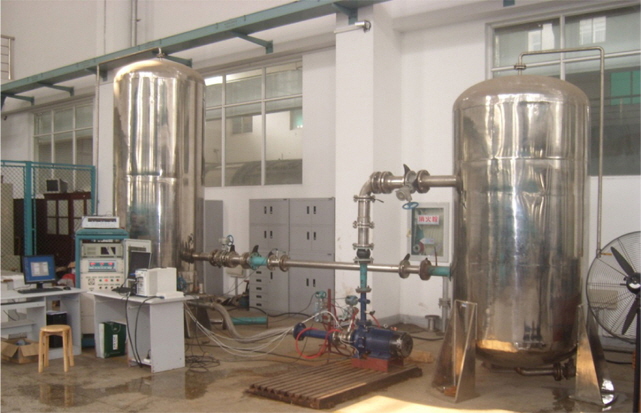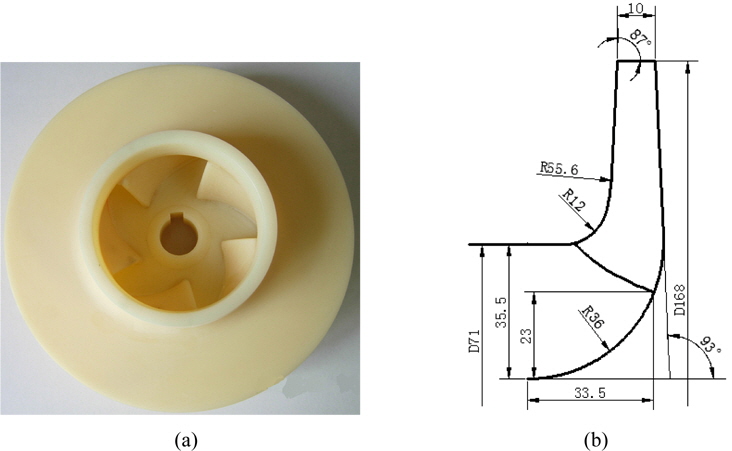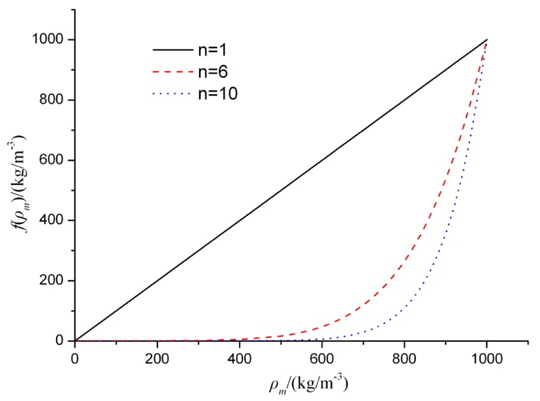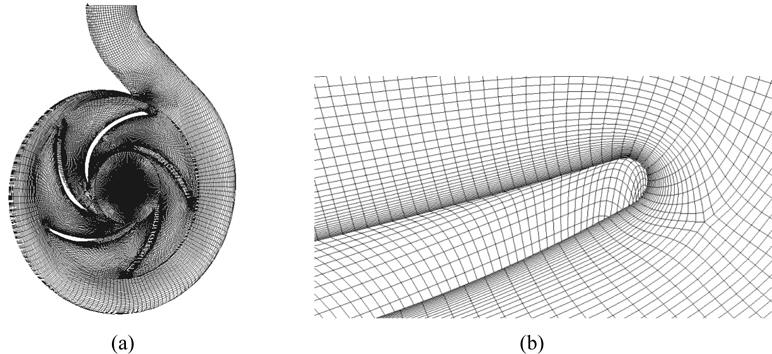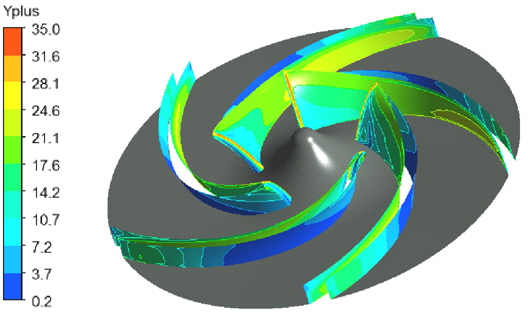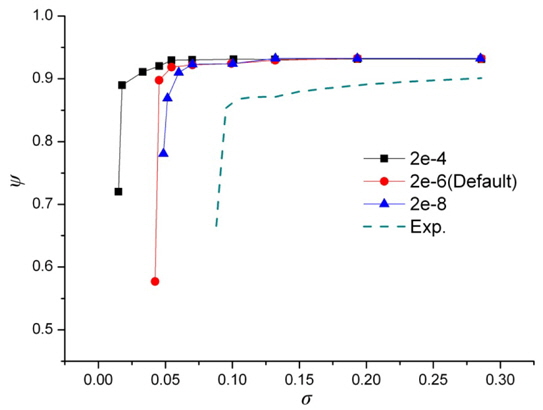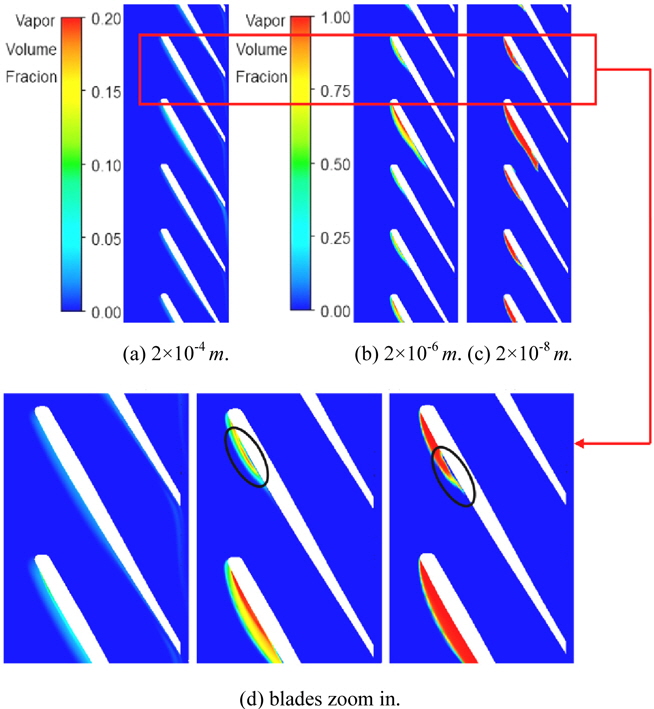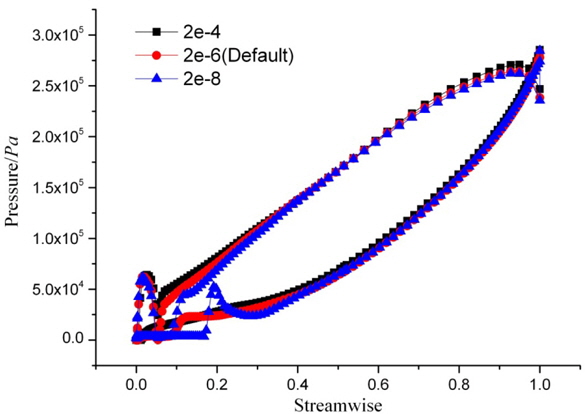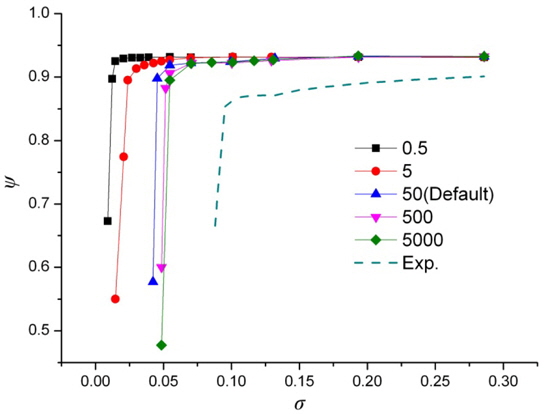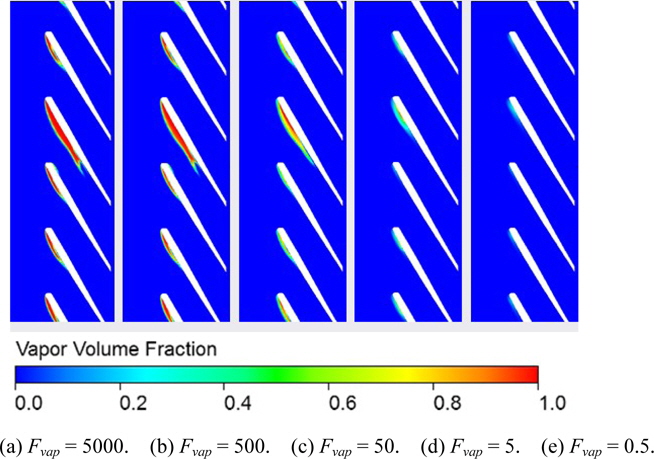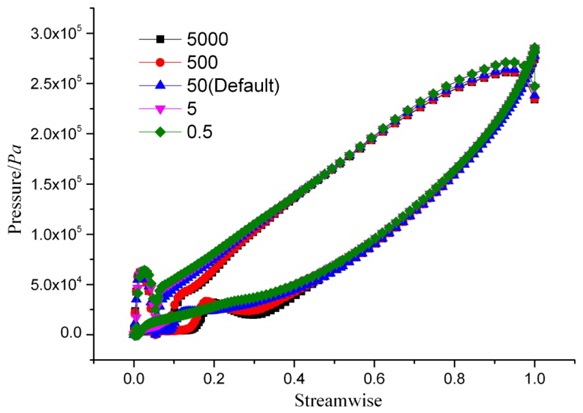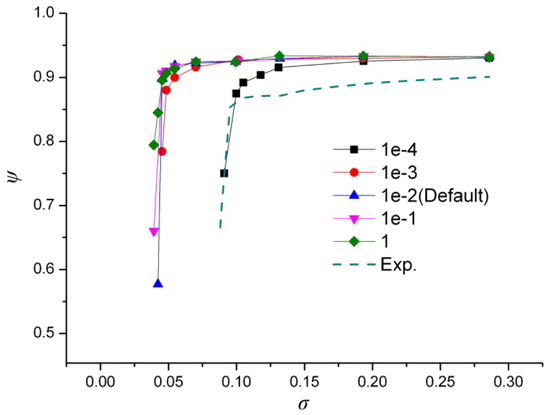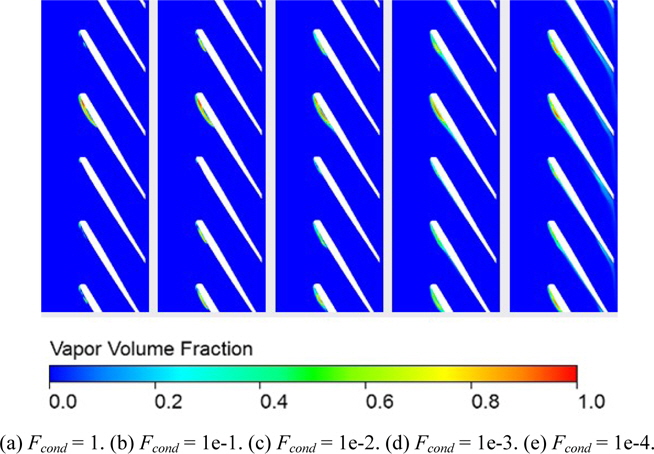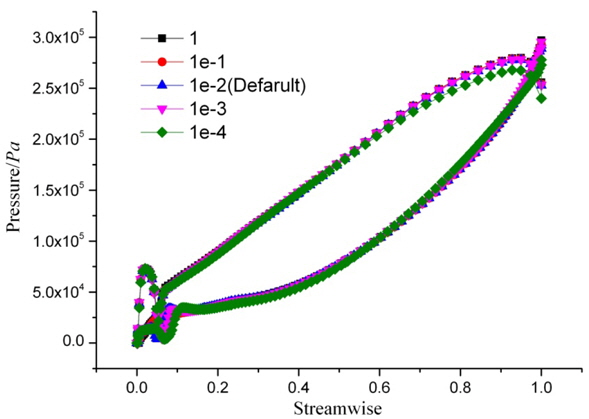



The occurrence of unsteady cavitation in pump is nearly inevitable, where the local pressure drops below the saturated vapor pressure, especially for those applied on vessels and offshore platforms, since the particles contained in seawater can increase the probability of cavitation generation. Cavitation may cause various problems, like vibration, noise and material erosion, which would deteriorate the pump performance and cause damage to the pump (Brennen et al., 1995; Ding et al., 2011; Bruno and Frank, 2009). In the recent years, owing to the continuous improvement of Computational Fluid Dynamics (CFD) technologies and computational capabilities, the prediction of pump cavitation performance based on CFD method has been beneficial for preliminary pump design (Liu et al., 2010; 2012; Wang et al., 2011; Dijkers et al., 2005). Thus, it makes the cavitation model play a significant role in numerical simulation progress. During the last decades, great efforts have been made in the development of cavitation models (Athavale et al., 2002; Coutier-Delgosha et al., 2003). These models can be put into two categories, namely interface tracking methods (Senocak and Shyy, 2004; Hirschi et al., 1998) and homogeneous equilibrium flow models (Zwart et al., 2004; Kunz et al., 2000; Singhal et al., 2002; Schnerr and Sauer, 2001; Merkle et al., 1998; Delannoy and Kueny, 1990). The former assumes that the cavity region has a constant pressure equal to the vapor pressure of the corresponding liquid and the computations are calculated only for the liquid phase. However, these methods are limited to 2-D planar or axisymmetric flows because of the difficulties dealing with complicated 3-D models. In the second category, the homogeneous equilibrium flow models assume the flow to be homogenous and isothermal, applying either a barotropic equation of state or a transport equation for both phases. The barotropic equation links the density to the local static pressure (Delannoy and Kueny, 1990). A recent experimental study implied that the vorticity production is an important aspect of cavitating flows, especially in the cavity closure region (Gopalan and Katz, 2000). But in the barotropic law, the gradients of density and pressure are always parallel, which leads to zero baroclinic torque. Therefore, the barotropic cavitation models cannot capture the dynamics of cavitating flows, particularly for cases with unsteady cavitation flows (Senocak and Shyy, 2002). Furthermore, this method is prone to instability because of high pressure-density dependence, which makes it difficult to reach the convergence levels of noncavitating flow simulations (Marina, 2008). Conversely, these limitations can be avoided by applying the transport equation models (TEM). In this approach, volume or mass fraction of the two phases are solved by an additional transport equation with different source terms. Besides, there is another apparent advantage of this method, which could predict the impact of inertial forces on cavities like elongation, detachment and drift of bubbles. In the past years, a great number of transport equation models are proposed (Zwart et al., 2004; Kunz et al., 2000; Singhal et al., 2002; Schnerr and Sauer, 2001; Merkle et al., 1998). These models apply different condensation and evaporation empirical coefficients to regulate the mass and momentum exchange. However, most of these empirical coefficients are calibrated on simple hydraulic machinery, such as hydrofoil or blunt body. When these models are employed in pumps, the accuracy of numerical simulation is strongly dependent on users’ experience to choose proper coefficients. Among this kind of TEM models, because of its effectively and stability, the Zwart-Gerber-Belamri model (hereafter ZGB model) was widely used for different cases (Zwart et al., 2004; Hagar et al., 2012; Liu et al., 2012).
In this study, the influence of the empirical coefficients on predicting the cavitation performance of a centrifugal pump was investigated. To this aim, the ZGB model was considered. Moreover, the experiments were carried out to validate the numerical simulations.
EXPERIMENTAL SETUP AND TEST PUMP
The experiments were performed on a closed platform in the Research Center of Fluid Machinery Engineering and Technical of Jiangsu University. Fig. 1 shows the centrifugal pump closed test rig. Two pressure transducers, JYB-KO-HAGL- 1, are installed in the upper and down steam, with a measurement accuracy of ±0.5%FS (The FS is interpreted as the full scale of the pressure transducer, which is ±100
The basic parameters of the test pump are listed as follows: the volume flow rate
The set of governing equation consists of the mass continuity (1) and momentum Eq. (2) plus a transport Eq. (3) to define vapor generation:
The mixture density is defined by the vapor volume fraction, expressed as:
where
The RNG
where the exponent
All the simulations were conducted by using the ANSYS-CFX commercial software and the ZGB model was considered in this paper, which is deduced from the Rayleigh-Plesset equation:
where
To get a good accuracy computing results, the structured hexahedral grids were generated by GridPro commercial software. Fig. 4(a) shows the computational fluid domain of the centrifugal pump. The grids near the blade surface region layer were refined, which is locally zoomed up in Fig. 4(b). The Y plus on the blade surface is ranged from 0.2 to 35 (Fig. 5). To get a relatively stable upper and down stream flow, two prolongations, whose lengths are four times of the pipe diameter, were assembled on the impeller and volute.
A mesh independence test was performed based on the pump head
where
Table 1 gives the simulation results with five different kinds of grid density. It is obviously that when the cell number is over two million, the discrepancy of the pump head is within 1%. Ultimately, considering the simulation efficiency, the total cell number of all the domains are set as 1.20×106.
[Table 1] Pump head with different cell numbers.

Pump head with different cell numbers.
In the simulation process, since the pump impeller is a rotating part, whereas the other parts, the prolongations and volute casing, are stators, the Multiple Reference Frame (MRF) approach was employed, which allows the analysis of situations involving rotator/stator fluid domains and has been demonstrated that it has good accuracy (Ding et al., 2011; Tan et al., 2012). The interfaces were imposed between the impeller and inlet prolongation and volute. The pressure and mass flow rate boundary conditions were fixed at the inlet and outlet, respectively. Moreover, no slip boundary condition was applied on the solid surface of the pump. All the calculations were firstly carried out under non-cavitation condition to obtain a steady solution. Then, the pressure loaded on the inlet was decreased progressively until the desired cavitation number was reached.
In the convenience of comparing the results, two dimensionless parameters are defined as:
where
>
Influence of the nucleation site radius
In Fig. 6, the pump head drop characteristic curves are shown, calculated by different NSR, while the other empirical coefficients are set as default. To distinguish the experimental results from the numerical simulations, the experimental results are plotted as dash line, whereas the straight lines with symbols stand for the computed results. Apparently, the smaller NSR, such as
In Fig. 7, the vapor volume fraction distribution with various
In Fig. 8, the upper curves are the data of the pressure side, while the below ones are the suction side. We can find that the pressure loading distributions on both sides of the blade are almost similar under different NSR, except for the leading edge of the suction side. For the case of higher NSR, the pressure on the suction side gradually rises from the leading edge to the trailing edge. It is mainly because there are a few bubbles with low volume fraction attached on the blade surface (Fig. 7(d)). The situation becomes different when the NSR drops. Due to the bubbles with high vapor volume fraction attached on the leading edge of the suction side, the pressure on this place are approximately zero and the length of the low pressure region increases with the decreasing NSR. For
>
Influence of the evaporation and condensation coefficients
Since the evaporation and condensation coefficients have much more influence on the calculation, more schemes are chosen. The results are given in Fig. 9. As seeing, the smaller
Figs. 10 and 11 present the vapor volume fraction distribution and blade loading distribution with various evaporation coefficients under the same conditions as Figs. 7 and 8. From Fig. 10, it can be find out that both of the cavity size and length are getting smaller and shorter as the evaporation coefficients declining, leading to diminishing the low blade loading region, as can be seen in Fig. 11. In addition, it is obviously that when the
Fig. 12 shows the head drop curves with different condensation coefficients. Similarly, five values are selected to investigate. We can see when increasing
Since the cavitation number in the case of
To investigate the influence of the empirical coefficients of cavitation model on predicting cavitating flow in centrifugal pump, numerical simulation and experiment are presented in this paper. The widely used Zwart-Gerber-Belamri cavitation model is considered. Within this model, three coefficients are analyzed, namely the nucleation site radius
(1) The nucleation site radius is considered in the first place with three different values, RB=2×10−4m, 2×10−6m and 2×10−8m. Compared with the experiment, the computed results show that the accuracy of the predictions of the pump cavitation performance is improved as the NSR decreasing. Meanwhile, the vapor volume fraction distribution and the blade loading distribution under certain operation condition are analyzed. For smaller NSR, both of the cavity length and the cavity region of high volume fraction increase, which would promote to degrade the pump head. Besides, because of the re-entrant jet, the low pressure region on the leading edge of the suction side of the blade is much larger with small NSR. (2) Then, the evaporation and condensation coefficients are researched. It can be noticed that, to obtain more precisely simulation results, one can either increases the evaporation coefficient or decreases the condensation coefficient. Moreover, it is important to note that the later approach has much more impact on the predictions than the former and produces progressively better results. To figure it out, the vapor volume fraction distribution is also studied. It is concluded that, the evaporation coefficient controls both the cavity length and the high vapor volume fraction cavity region, and the later factor is more affective on the pressure loading on the blade, but less effective on numerical predictions. On the other hand, the condensation coefficient mostly regulates the cavity length, while the high vapor volume fraction nearly remains identical. And it is observed that, when the cavity covers all over the suction side of the blade, the simulation result has the best agreement with the experiment. However, while the cavity length is within the blade, the simulation results have only a little change. Hence, comparing the influence of the evaporation and condensation coefficients, we may draw the conclusion that the cavity length is the most effect factor degrading the pump head. While the cavity region with high vapor volume fraction is the main factor which impacts the blade loading pressure greatly, but has little impact on the improvement of numerical predictions.
